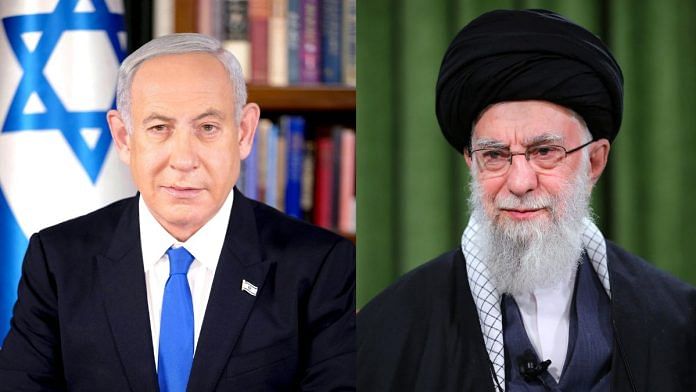The Iran-Israel conflict, and America’s entry into their war, caused extreme unease in West Asia. Global markets tumbled as tensions increased – particularly when Iran threatened to close the Strait of Hormuz to international shipping. But Iran and Israel were quick to accept a United States-mediated ceasefire on 24 June – bowing to intense domestic weariness, military fatigue, and international pressure. The US strikes on Iran’s nuclear sites, thus, acted both as a catalyst and a negotiating tool, putting in place a fragile peace. Whether this ceasefire is only a matter of convenience driven by domestic compulsions and mutual exhaustion or indeed a step toward lasting peace remains to be seen.
For Iran, the bombardment destroyed vital infrastructure, inflicted civilian casualties, and further burdened an economy already strained by longstanding sanctions. Although the country ingeniously accepted that its nuclear programme was severely damaged – as also claimed by the US – a more detailed post-strike assessment suggested that the setbacks were limited, perhaps delaying progress only by months.
On the domestic front, Iran has had to contend with economic setbacks and rising poverty. In the regime’s attempt to remain in power, repression intensified. Iranian authorities executed alleged collaborators and stifled dissent. These measures emphasised a ruling dispensation battling to maintain legitimacy and authority under extreme pressure.
Implications for Iran & Israel
A section of the Iranian population sees these imperious actions by the US and Israel as an affront to Iran’s sovereignty, serving to revive nationalistic fervour. The prospects of regime change for the people of Iran are even more frightening, given the experience of countries such as Libya and Iraq, where such regime changes only ushered in more chaos and instability and even civil war.
As far as Israel is concerned, public sentiment within the country began to shift following the initial strikes. While Prime Minister Netanyahu and military leaders heralded success, claiming strategic objectives had been achieved, they were met with growing public and political war-weariness, especially with the end of hostilities in Gaza nowhere in sight.
Israel has also come to realise the limits of military action, the aim of the June strikes being to degrade, not destroy, Iran’s nuclear and ballistic capabilities. The Israeli assessment is that they have only bought time, anything between two to four years, before Iran’s nuclear programme gets back on track – an assessment more in consonance with the US one. Moreover, reliance on US endorsement became increasingly apparent as America insisted on restraint after supporting Israel’s initial strikes, exercising strong influence over the country’s strategic options.
With domestic pressure already simmering due to the prolonged Gaza conflict, the Israeli leadership recognised the political and economic risks of extending the confrontation with Iran. As things stand, Iran remains an existential threat to Israel, and therefore, future military actions or confrontations can never be ruled out altogether.
Also read: India is losing information war—US backs Israel, hosts Munir, but asks Delhi to show restraint
Role of international stakeholders
International pressures and realpolitik also had their roles to play. While the US strikes served as a strong signal of deterrence, military action was used as a lever to broker peace, to avoid a broader, long-drawn conflict. The Massive Ordnance Penetrators (30,000 lb. bunker-buster bombs) used by the US did cause some damage but failed to obliterate Iran’s nuclear capabilities.
Regional stakeholders – particularly Saudi Arabia, the UAE, and Bahrain – initially chose to endure the confrontation with Iran but ultimately supported a ceasefire, fearing a regional spillover of the conflict jeopardising energy supplies.
The G7 echoed these concerns, urging for a ceasefire and renewed nuclear talks with Iran, while other European countries, along with the United Nations, warned against further escalation and criticised the unilateral bombing of nuclear sites without legal justification.
Global oil markets also fluctuated sharply, and energy security concerns became a significant catalyst for de-escalation. Iran’s traditional allies, China and Russia, remained neutral and joined the chorus of voices calling for de-escalation and diplomacy. Thus, the absence of broad international support either for Iran or for Israel compounded the pressure on both countries to accept a pause to review their respective entrenched mindsets and options.
Also read: Threats to India are not over. Why it must build fortress-like defences
Fragile peace
The ceasefire between Iran and Israel has, thus, emerged as a result of an interlocking web of military exhaustion, domestic strain, and international coercion. However, this ceasefire is fragile. Damage assessments are incomplete, and Iran will no doubt rebuild its nuclear infrastructure.
The attacks on Iran’s nuclear facilities have exposed the discriminatory nature of the Nuclear Non-Proliferation Treaty (NPT) and have, perhaps, only strengthened its resolve to further its nuclear ambitions. Israel may have succeeded in blanking out the damage caused by retaliatory Iranian strikes through strict censorship. However, a few visuals did surface of bombed-out buildings in Tel Aviv and Haifa, which caused a number of civilian casualties and showed that the famed Iron Dome is not invincible and can be breached. For a small country like Israel, even a single hit is one too many and being on the receiving end may have contributed to its decision.
Nevertheless, both countries retain significant military capabilities that can be put into play at short notice, and minor violations of the ceasefire cannot be totally ruled out. Accordingly, for this fragile peace to transition to a lasting peace and to arrive at a win-win solution, mature statesmanship must replace jingoistic brinkmanship. Regime change is not the answer.
General Manoj Mukund Naravane PVSM AVSM SM VSM is a retired Indian Army General who served as the 28th Chief of the Army Staff. Views are personal.
(Edited by Zoya Bhatti)






